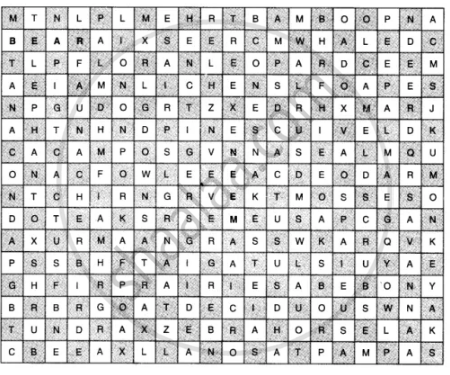Advertisements
Advertisements
Question
Match the following.
| (i) Walrus | (a) Softwood tree |
| (ii) Cedar | (b) An animal of tropical deciduous forest |
| (iii) Olives | (c) A polar animal |
| (iv) Elephant | (d) Temperate grassland in Australia |
| (v) Campos | (e) Thorny shrubs |
| (vi) Downs | (f) A citrus fruit |
| (g) Tropical grassland of Brazil |
Solution
| (i) Walrus | (c) A polar animal |
| (ii) Cedar | (a) Softwood tree |
| (iii) Olives | (f) A citrus fruit |
| (iv) Elephant | (b) An animal of tropical deciduous forest |
| (v) Campos | (g) Tropical grassland of Brazil |
| (vi) Downs | (d) Temperate grassland in Australia |
APPEARS IN
RELATED QUESTIONS
Answer the following question.
Name any two steps that government has taken to conserve plants and animals.
Match the followings :
| Land use | prevent soil erosion |
| Humus | narrow zone of contact between the lithosphere, hydrosphere and atmosphere |
| Rock dams | productive use of land |
| Biosphere |
organic matter deposited on top soil
|
| contour ploughing |
Which are the three broad categories of natural vegetation?
In which climatic conditions are citrus fruits cultivated?
In the crossword table given below, some words are hidden. They are all about vegetation and wildlife and are to be found horizontally and vertically. Two have been worked out for you. Work in pairs with a friend.
Very Short Type Question:
How is height of land and the character of vegetation related with each other?
Very Short Type Question:
Where are shrubs found?
Very Short Type Question:
Why are only citrus fruits cultivated in mediterranean regions?
Very Short Type Question:
Where are tropical deserts located?
Short Type Question:
Give cm account of the natural vegetation and wildlife found in the polar regions.
